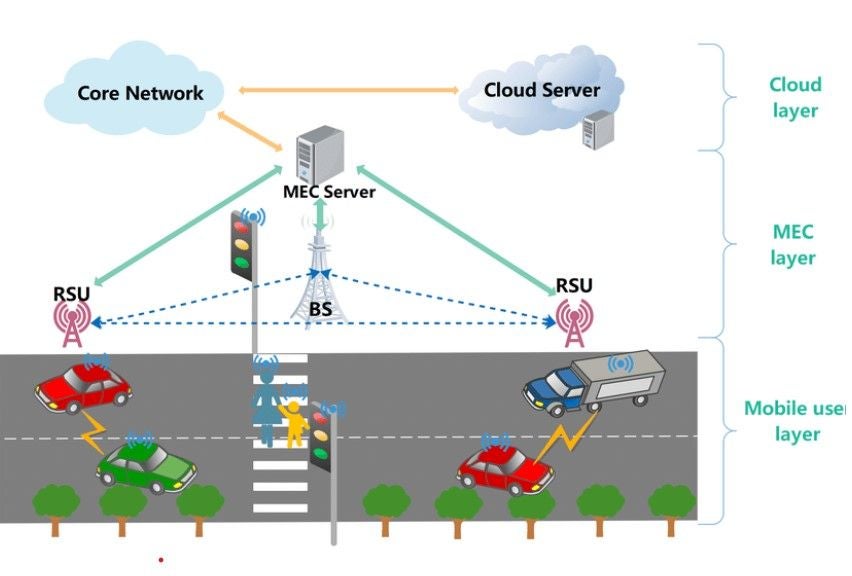Products You May Like
The proof-of-concept undertaking reveals that this method may very well be a secure and cheaper different to roadside models, in response to the businesses.

Cities may use mobile and cellular edge compute to deploy supply bots and robotaxis as an alternative of putting in roadside models to energy the community, in response to new analysis from Verizon and Cisco. The 2 corporations lately accomplished a proof-of-concept undertaking in Las Vegas to check the concept.
As a substitute of deploying sufficient roadside models to construct a vehicle-to-everything community, cities may use present mobile networks, supplied they’ve a public MEC infrastructure. Utilizing present mobile networks would velocity up the rollout of autonomous autos, however some government agencies have concerns about the service limitations of that approach.
The Cisco and Verizon check proved that the mix of Verizon’s LTE community, public 5G Edge with AWS Wavelength and Cisco Catalyst IR1101 routers meet the latency thresholds required for autonomous driving functions, in response to the businesses.
Krishna Iyer, director of techniques structure at Verizon, mentioned in a press launch that the undertaking reveals the power of cellular edge compute platforms for related transportation innovation with rather more streamlined structure.
“This test is a huge milestone in proving that the future of connectivity for IoT applications can be powered by cellular,” he mentioned.
Mark Knellinger, lead transportation options architect at Cisco, mentioned in a press launch, that that is “huge for roadway operators in that it relieves them of the massive expense of deploying and operating a dedicated vehicle-to-everything environment.”
SEE: Top 5 autonomous car roadblocks
Utilizing a virtualized community for AV communications may very well be a less expensive different to putting in roadside models. A 2014 research from the U.S. Division of Transportation discovered that the average installation cost for a single dedicated short-range communication station ranged from $13,000 to $21,000. These stations are a core element of vehicle-to-everything infrastructure. The associated fee contains {hardware}, set up labor and design and planning. The authors famous that gear prices dropped over the course of the experiment and that costs might fall additional because the market grows and as tech specs stabilize.
Parts of a vehicle-to-everything infrastructure
Autoweek describes “vehicle-to-everything” because the all-encompassing term for a vehicle’s connected communications that can help the car navigate the environment and ship info again to the communications community. This contains processing real-time visitors info, reacting to altering street situations and recognizing street indicators and warnings.
In line with Autoweek, the time period additionally contains different communications, together with:
- Car-to-vehicle: Trade info wirelessly with different autos on the street.
- Car-to-infrastructure: Share and obtain info with infrastructure parts corresponding to related cameras, streetlights, indicators and lane markers.
- Car-to-pedestrian: Talk with cyclists and walkers to enhance security.
- Car-to-network: Join and share information with information facilities, street infrastructure and different automobiles.
Getting a number of stakeholders to agree
One other report on the prices of vehicle-to-infrastructure building illustrates the complexity of these projects. The report lists these stakeholders concerned in a V2I deployment:
- Street operators
- Cell community operators
- Suppliers/know-how suppliers
- Car OEMs
- Service supplier
- Consumer of the service answer (drivers and fleet operators)
- Educational analysis
Agreeing on a communications structure is clearly a key element of those initiatives. This paper analyzes the prices of a mobile network-based communication system, which may very well be 2G, 3G, 4G and/or 5G, and two direct communication plans that use devoted spectrum, 802.11p and PC5.
The research concluded that an infrastructure based mostly on the cellular communications community is interesting and cost-effective, however there are additionally considerations about whether or not that type of community can assist the protection important companies. The report authors discovered that “a risk-averse view is often taken by ROs where guaranteed performance for such services can only be currently delivered via direct communications systems.” The priority is that these companies “tend to be limited and do not necessarily guarantee the ability to maintain such levels of service across the entire road network.”
